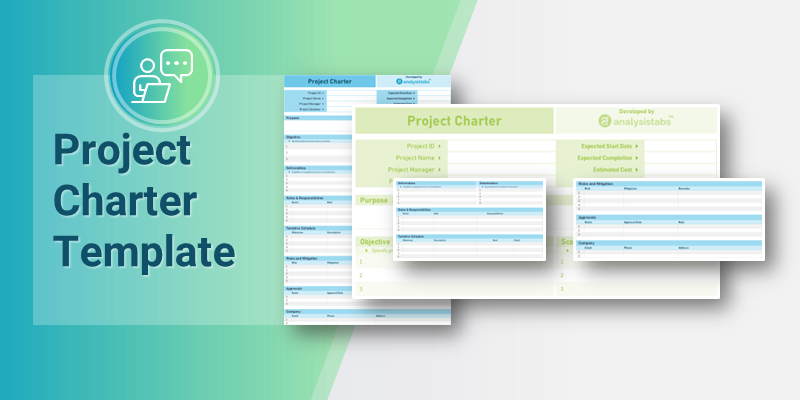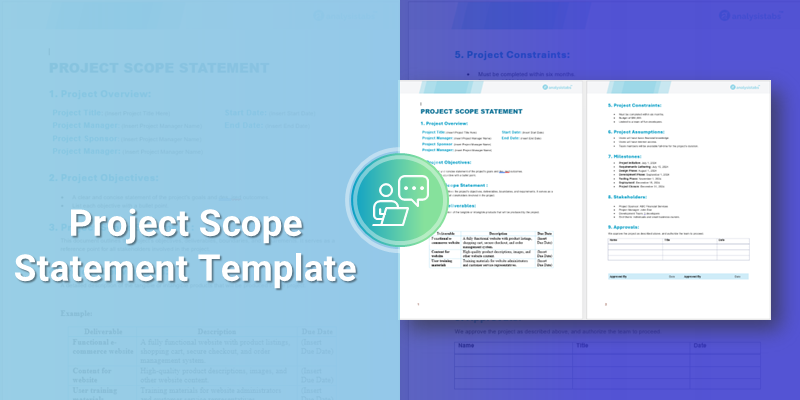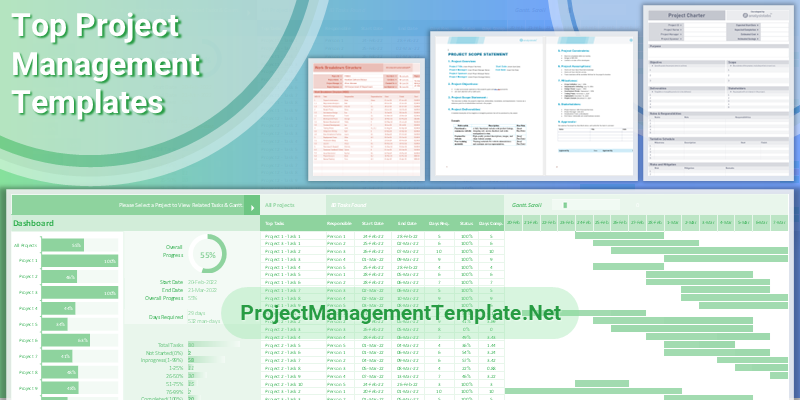Project management templates are pre-designed documents that offer a structured framework for various project phases. Streamline your workflow and boost efficiency with our comprehensive guide to the most popular project management templates, categorized by phase and essential for success! Leverage these free templates to tackle any project effectively, from planning and execution to monitoring and closing.Projectmanagementtemplate.net provides a comprehensive overview of project management templates, categorized by project phase to empower you to tackle any project effectively. Let’s delve into the most popular templates categorized by the crucial phases of project management.
Project Planning Templates
The planning phase is the cornerstone of any successful project. It’s where you define your goals, scope, resources, and roadmap. By investing time in thorough planning, you set the stage for smooth execution, minimize risks, and increase the likelihood of achieving project objectives. This section explores essential project planning templates that provide a solid foundation for your endeavors.
Project Charter
This document defines the project’s goals, scope, stakeholders, and key players. It serves as a foundational agreement, ensuring everyone is aligned on project objectives and expectations. Project charters are particularly useful for complex projects with multiple stakeholders or when seeking project approval.
Download Project Charter Excel Template

Who uses it: Project managers, team leads, executives, clients
Smartsheet.com: You can find wide range of Free Project Charters and helpful tips.
Project Scope Statement
This template outlines the project’s deliverables and excludes what’s not included. It helps manage expectations, prevent scope creep (adding features or tasks outside the original plan), and ensure project resources are allocated effectively. Project scope statements are crucial for any project to avoid misunderstandings and ensure everyone is on the same page about what will be delivered.
Download Project Scope Statement Template

Who uses it: Project managers, team members, clients
Clickup.com: 10 Project Scope Templates and Scope Document Examples
Work Breakdown Structure (WBS)
This document breaks down the project into smaller, manageable tasks. It provides a hierarchical view of all project activities, facilitating resource allocation and progress tracking. WBS are beneficial for complex projects with numerous tasks and dependencies.
Download Work Breakdown Structure Template

Who uses it: Project managers, team leads
External Link: https://www.smartsheet.com/marketplace/templates/work-breakdown-structure-wbs
Project Timeline
This visual representation showcases the project schedule with tasks, durations, and dependencies. It helps identify critical paths (the sequence of dependent tasks that determines the minimum project duration), potential bottlenecks (delays in the workflow), and ensures project completion within deadlines. Project timelines are essential for any project to visualize the workflow, manage expectations, and keep everyone on track. Who uses it: Project managers, team members, stakeholders External Link: https://m.youtube.com/watch?v=35jPwsHGVwc
Resource Management Plan
This template identifies and allocates resources like personnel, equipment, and budget. It ensures efficient resource utilization and avoids conflicts or overbooking. Resource management plans are crucial for any project to ensure the right people and tools are available at the right time. Who uses it: Project managers, team leads, human resources External Link: https://clickup.com/templates/resource-planning-t-200533044
This is just a glimpse into the plethora of planning phase templates available. We will explore additional project management template categories in the following sections.
Project Execution Templates
The execution phase is where your meticulously crafted plans transform into reality. This phase involves assigning tasks, managing resources, and actively working towards project goals. Well-defined templates streamline this critical stage, ensuring clarity, efficient communication, and progress tracking.
- Task List Template: A detailed breakdown of tasks with owners, deadlines, and dependencies. It fosters accountability, transparency, and ensures everyone is aware of their role in the project’s success. Task lists are fundamental for any project, keeping everyone organized and focused on their assigned duties. Who uses it: Project managers, team members External Link: https://www.smartsheet.com/top-project-management-excel-templates
- Kanban Board Template: A visual workflow management tool for tracking task progress. Tasks are visualized on digital boards with columns representing stages (e.g., To Do, In Progress, Done). Kanban boards provide a real-time overview of project progress, identify bottlenecks, and facilitate collaboration. Who uses it: Project managers, team members.
- Meeting Agenda Template: Ensures focused and productive project meetings. A clear agenda outlines topics for discussion, decisions to be made, and action items. This promotes efficient use of meeting time and keeps everyone on the same page. Who uses it: Project managers, team leads. https://clickup.com/templates/agenda-kkmvq-5982548
- Meeting Minutes Template: Documents key decisions, action items, and next steps. Meeting minutes serve as a vital reference point for project progress and ensure everyone is aware of their responsibilities following the meeting. Who uses it: Project managers, team members. https://clickup.com/templates/meeting-minutes-kkmvq-15041
- Risk Register Template: Identifies potential risks and mitigation plans. Proactive risk management allows you to anticipate potential roadblocks and develop contingency plans to minimize their impact. Who uses it: Project managers, team members. https://thedigitalprojectmanager.com/projects/risk-management/risk-register/
By leveraging these templates throughout the execution phase, you can maintain project momentum, address challenges effectively, and ensure successful project delivery.
Project Monitoring and Control Templates
The monitoring and control phase is all about staying vigilant. Here, you continuously assess project progress, identify deviations from the plan, and take corrective actions as needed. Effective monitoring helps ensure project stays on track, meets deadlines, and adheres to budget constraints.
- Project Status Report Template: Communicates project progress, achievements, and any challenges. This report keeps stakeholders informed and allows for course correction if necessary. Project status reports are crucial for maintaining transparency and ensuring everyone is aligned on project health. Who uses it: Project managers, team members, stakeholders. https://www.smartsheet.com/creating-an-effective-project-status-report-with-templates
- Burn Down Chart Template: Visualizes remaining work compared to available time. This chart depicts a projected decrease in workload over time, ideally reaching zero by the project deadline. Burn down charts provide a clear visual indicator of progress and can help identify potential delays early on. Who uses it: Project managers, team members. https://www.automateexcel.com/charts/burndown-template/
- Issue Tracking Template: Tracks and manages project issues and their resolution. This template facilitates the identification, logging, and resolution of problems that may arise throughout the project lifecycle. Who uses it: Project managers, team members. https://clickup.com/templates/issue-management-t-205392818
- Change Order Request Template: Formalizes requests for project scope changes. This document outlines the proposed change, rationale, and potential impact on budget, timeline, or resources. Change order requests ensure transparency and provide a documented record of project scope modifications. Who uses it: Project managers, team members, stakeholders. https://asana.com/resources/change-order-template
Utilizing these templates during project monitoring and control empowers you to proactively manage risks, optimize resource allocation, and ultimately deliver projects on time and within budget.
Project Closing Templates
The closing phase signifies project completion. Here, you formally conclude the project, document lessons learned, and celebrate successes. Effective closure ensures a smooth handover of deliverables, avoids loose ends, and sets the stage for future project improvements.
- Project Lessons Learned Log: Documents project experiences, successes, and areas for improvement. Capturing these valuable insights allows you to apply learnings to future endeavors and continuously enhance project management practices. Project lessons learned logs are valuable for fostering knowledge sharing within teams and organizations. Who uses it: Project managers, team members. https://www.projectmanager.com/templates/lessons-learned-template
- Project Final Report Template: Summarizes project outcomes, achievements, and lessons learned. This report provides a comprehensive overview of the project for stakeholders and serves as a valuable historical record. Project final reports ensure transparency and accountability, showcasing the project’s value and impact. Who uses it: Project managers, team members, stakeholders. https://clickup.com/templates/report-form-kkmvq-6130344
By incorporating these closing phase templates, you can ensure a successful project handover, celebrate achievements, and continuously refine your project management approach. This website serves as a springboard for your project management journey. Explore the plethora of project management templates available and leverage them to streamline your workflow, boost efficiency, and achieve project success!
Resource Management
Resource management involves identifying, allocating, and managing the people, equipment, and budget required for project success. Effective resource management ensures optimal utilization of resources, avoids conflicts, and keeps projects on track.
- Resource Allocation Matrix: This template visually maps project tasks to required resources (people, equipment, etc.). It facilitates efficient resource allocation and ensures the right people are assigned to the right tasks. Who uses it: Project managers, team leads.
- Staff Capacity Planning Template: Helps plan and manage team workload to avoid overallocation and burnout. This template assesses team member availability, skills, and ongoing commitments to ensure balanced workloads. Who uses it: Project managers, human resources.
- Budget Tracking Template: Tracks project expenses against the allocated budget. This template helps identify potential cost overruns and allows for proactive adjustments to stay within budget constraints. Who uses it: Project managers, finance teams.
Communication Management
Effective communication is paramount for project success. Communication management templates ensure clear and consistent information flow among stakeholders, fostering collaboration and reducing misunderstandings.
- Project Communication Plan Template: Defines communication channels, stakeholders, and communication frequency. This plan ensures everyone receives the right information at the right time through the most appropriate channels. Who uses it: Project managers, team leads.
- Stakeholder Engagement Plan Template: Outlines strategies for engaging project stakeholders. This plan identifies stakeholders, their interests, and preferred communication methods. Who uses it: Project managers, communication teams.
- Meeting Minutes Template (H3) (Already mentioned in Execution Phase): While previously mentioned in the Execution Phase, meeting minutes are so crucial for communication that they deserve mention here as well. Who uses it: Project managers, team members.https://clickup.com/templates/meeting-minutes-kkmvq-15041
Risk Management
Proactive risk management helps anticipate potential challenges and develop contingency plans to minimize their impact. Risk management templates streamline this process, ensuring a systematic approach to risk identification, assessment, and mitigation.
- Risk Register Template (H3) (Already mentioned in Execution Phase): Previously mentioned in the Execution Phase, risk registers are a cornerstone of risk management. Who uses it: Project managers, team members. https://thedigitalprojectmanager.com/projects/risk-management/risk-register/
- Risk Assessment Matrix: This template categorizes risks based on their likelihood and potential impact on the project. This helps prioritize risks and allocate resources for mitigation efforts. Who uses it: Project managers, risk management teams.
By leveraging a wide range of project management templates throughout the project lifecycle, you can establish a strong foundation for success. Explore the extensive selection of templates available and choose the ones that best suit your specific project needs.
Team Management
Effective team management is crucial for project success. Team management templates help you organize your team, delegate tasks, and foster collaboration, ensuring everyone is aligned and working towards shared goals.
- Team Roles and Responsibilities Matrix: This template outlines the roles, responsibilities, and accountabilities of each team member. This promotes clarity, avoids confusion, and ensures everyone understands their contribution to the project. Who uses it: Project managers, team leads.
- Team Meeting Agenda Template: This template ensures focused and productive team meetings specifically for team-related discussions. Similar to the meeting agenda template mentioned in the Execution Phase, this tailors the agenda to team-specific topics. Who uses it: Project managers, team leads.
- Team Collaboration Checklist Template: This checklist outlines key activities to promote effective team collaboration. This can include communication protocols, information sharing practices, and conflict resolution strategies. Who uses it: Project managers, team leads.
Quality Management
Quality management ensures that project deliverables meet the required standards. Quality management templates provide tools to define quality expectations, identify potential defects, and ensure project outputs meet the desired level of quality.
- Quality Management Plan Template: This plan outlines the processes and procedures for ensuring project quality. It defines quality criteria, inspection methods, and corrective actions for identified defects. Who uses it: Project managers, quality assurance teams.
- Quality Checklist Template: This checklist outlines specific criteria for evaluating project deliverables. This ensures consistency in quality checks and helps identify areas for improvement. Who uses it: Project managers, quality assurance teams.
- Defect Tracking Template: Tracks identified defects or non-conformances throughout the project. This template facilitates the logging, reporting, and resolution of quality issues. Who uses it: Project managers, quality assurance teams.
Remember, this is not an exhaustive list, but it provides a solid foundation for exploring the vast array of project management templates available. By incorporating these templates into your project management process, you can streamline workflows, enhance communication, mitigate risks, and ultimately achieve project success!
What is Project Management?
Project management is the application of knowledge, skills, tools, and techniques to project activities to meet project requirements. In simpler terms, it’s the practice of organizing, planning, executing, and controlling projects to achieve specific objectives within defined timelines, budgets, and resource constraints. Project management encompasses a wide range of activities, including:
- Defining project goals and objectives
- Breaking down the project into manageable tasks
- Estimating resources and timelines
- Assigning tasks and responsibilities
- Monitoring progress and managing risks
- Communicating effectively with stakeholders
- Ensuring project deliverables meet quality standards
- Closing out the project and documenting lessons learned
Effective project management is essential for any organization or individual undertaking endeavors with specific goals and deadlines. It helps ensure projects are completed on time, within budget, and to the required quality standards.
How Project Management Templates Are Useful
Project management templates are pre-designed documents that provide a structured framework for various project phases. Utilizing these templates offers a multitude of benefits, including:
- Increased Efficiency: Templates save you time by eliminating the need to reinvent the wheel for common project tasks. They provide a readily available starting point, allowing you to focus on project specifics rather than formatting and structure.
- Improved Consistency: Templates ensure a consistent approach across projects. This promotes clarity, reduces confusion, and fosters better communication within your team.
- Enhanced Organization: Templates help you stay organized by providing a clear structure for planning, tracking, and managing project tasks. They ensure all essential information is documented and readily accessible.
- Reduced Risk: Well-designed templates often incorporate best practices for project management, which can help identify and mitigate potential risks throughout the project lifecycle.
- Improved Communication: Templates can facilitate clear communication by establishing a common language and format for project documentation. This ensures everyone involved in the project understands expectations and their roles.
- Better Decision-Making: Templates can help gather and organize project data, making it easier to analyze progress, identify trends, and make informed decisions about project execution.
Overall, project management templates are valuable tools that can significantly enhance your project management effectiveness. They streamline workflows, improve communication, mitigate risks, and ultimately contribute to successful project delivery.
Benefits of Using Project Management Templates?
Beyond the core advantages mentioned earlier, project management templates offer a range of additional benefits:
- Improved Communication: Templates can facilitate clear communication by establishing a common language and format for project documentation. This ensures everyone involved in the project understands expectations and their roles.
- Better Decision-Making: Templates can help gather and organize project data, making it easier to analyze progress, identify trends, and make informed decisions about project execution.
- Reduced Errors: Templates can minimize errors by providing pre-defined fields and checklists, ensuring all crucial information is captured and considered.
- Enhanced Collaboration: Templates can promote collaboration by providing a shared platform for teams to access and update project information.
- Scalability and Adaptability: Many templates can be adapted and customized to fit the specific needs of your project, ensuring scalability across various project sizes and complexities.
Additional Considerations for Project Management Templates?
While project management templates offer significant advantages, here are some additional considerations to keep in mind:
- Template Selection: Choose templates that align with your project type, methodology (e.g., Agile, Waterfall), and industry best practices.
- Customization: Don’t be afraid to adapt templates to fit your specific project requirements. The goal is to leverage the structure while tailoring it to your unique needs.
- Integration with Project Management Tools: Many project management software applications offer built-in templates or allow seamless integration with external template libraries. Explore these options to streamline your workflow further.
- Regular Review and Update: As your project management practices evolve, revisit and update your templates to reflect ongoing improvements.
By thoughtfully incorporating project management templates and considering these additional aspects, you can empower your team, streamline workflows, and achieve exceptional project outcomes.
Conclusion
This comprehensive guide has explored various project management template categories, along with their significance and example templates for each. Remember, the most effective project management approach utilizes a combination of templates tailored to your specific project needs and industry. Here are some additional tips for maximizing the benefits of project management templates:
- Customize templates: Don’t be afraid to adapt templates to fit your project’s unique requirements.
- Standardize templates: Consider adopting a standardized set of templates within your organization to ensure consistency and efficiency.
- Integrate with project management tools: Many project management software applications offer built-in templates or allow seamless integration with external template libraries.
- Regularly review and update templates: As your project management practices evolve, revisit and update your templates to reflect ongoing improvements.
By leveraging project management templates strategically, you can empower your team, streamline workflows, and achieve exceptional project outcomes. Ready to take your project management skills to the next level? Explore the plethora of project management resources available online and discover the power of effective project planning and execution!
